Is Your Diet
important things
You are only in the gym for 1 hour of the day, the other 23 hours are spent on rest and this topic. You have heard the expression “you are what you eat”. That’s just the tip of the iceberg. You are what you eat, when you eat, how much you eat and so much more. Little changes in our diet habits effect our body composition and overall health. Basic nutrition and performance nutrition are two completely different things.
When we now say the word “diet”, it brings to mind eating food we don’t like, constant cravings and fears of failure. However, your diet is what you eat or drink PERIOD… Good food or bad food, That’s all it is. It doesn’t have to be something you are on. It is just a habit that you, like everyone else in the world, have had since before you were born. So lets look at dieting as just eating and drinking, nothing more and nothing less. It is time to get back to basics, time to understand how we can make better choices regarding what we eat and what result these choices will have. Below are some Fitness related news and articles that are filled with useful information…
Quick Refernece:
Natural Enhancements
Essential Vitamins And Minerals
If you are a beginner or first time visitor, its always a good idea to have a look at our Primer To Nutrition.
The Latest
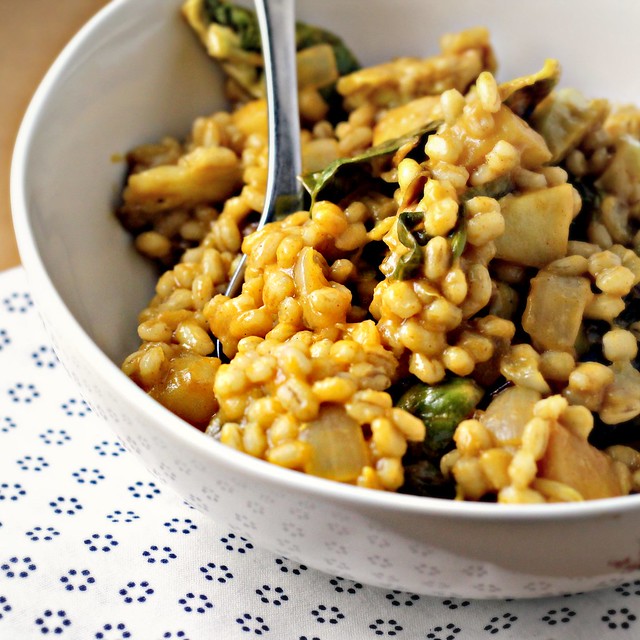
“MOTHER” Barley Risotto Posted under: Recipes There are base sauces that are used to create other sauces; these sauces are called Mother Sauces. The following recipe is a Mother Barley Risotto, it is a base
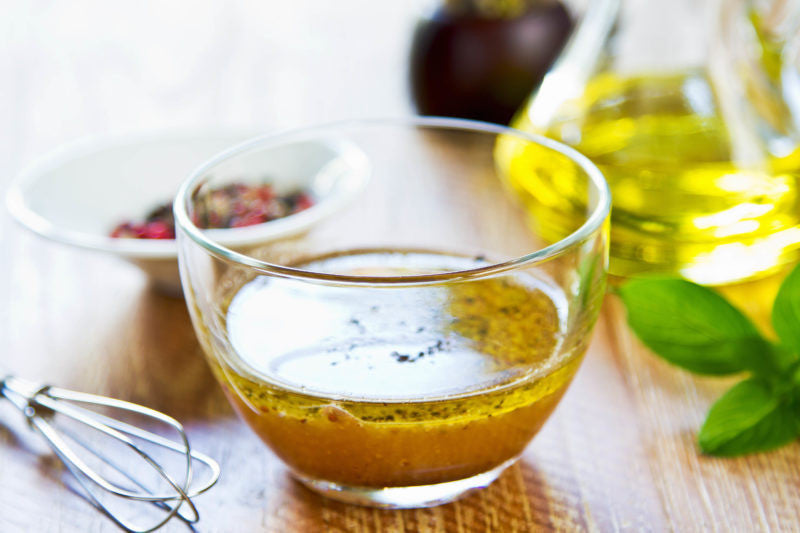
Vinaigrettes Posted under: Recipes Balsamic/Dijon/Honey 2 tbsp Balsamic Vinegar 2 tbsp Apple Cider Vinegar 1 tbsp Dijon Mustard 1 tbsp Honey 4 tbsp 3/6/9 Oil Salt & Pepper to taste Per tbsp = .1g Protein
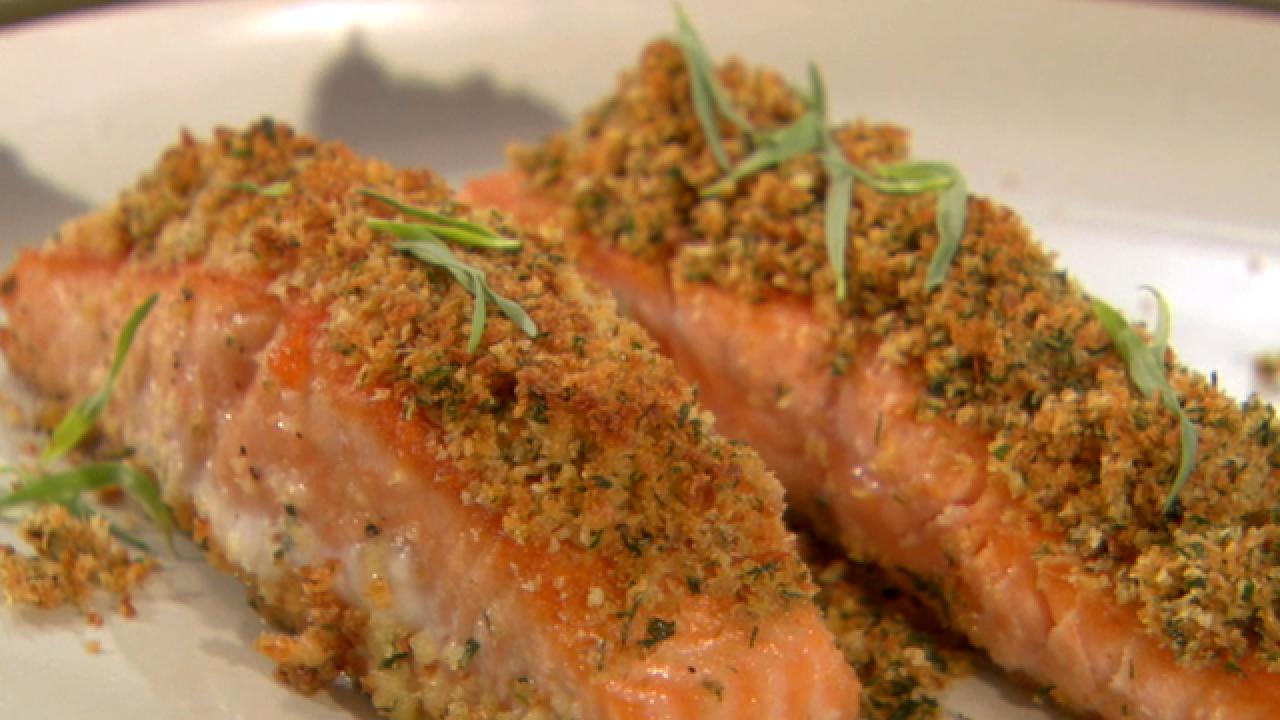
Herb Crusted Pan Roasted Salmon Posted under: Recipes Herb Crusted Pan Roasted Salmon Ingredients for Salmon: 5oz. Wild Atlantic Salmon Fillet 2 tsp Dijon Mustard ½ tbsp Chopped Basil ½ tbsp Chopped Chives ½
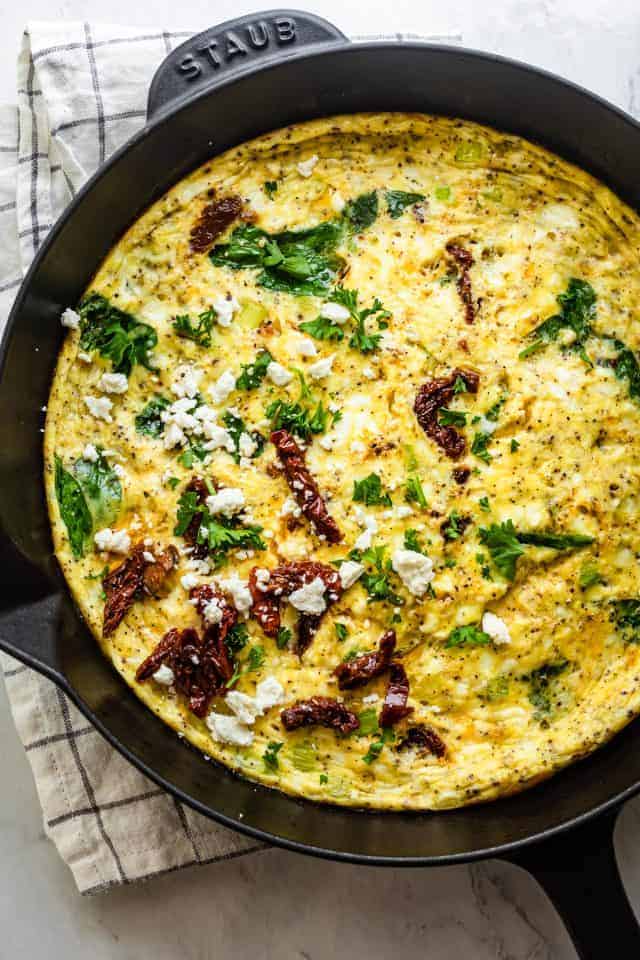
Mediterranean Frittata Posted under: Recipes Mediterranean Frittata ½ cup Chopped Onion ½ cup Chopped Zucchini ½ cup Chopped Mushroom 1 tsp Chopped Garlic 2 tbsp Chopped Sundried Tomato in Oil (patted dry) ¾ cup Egg
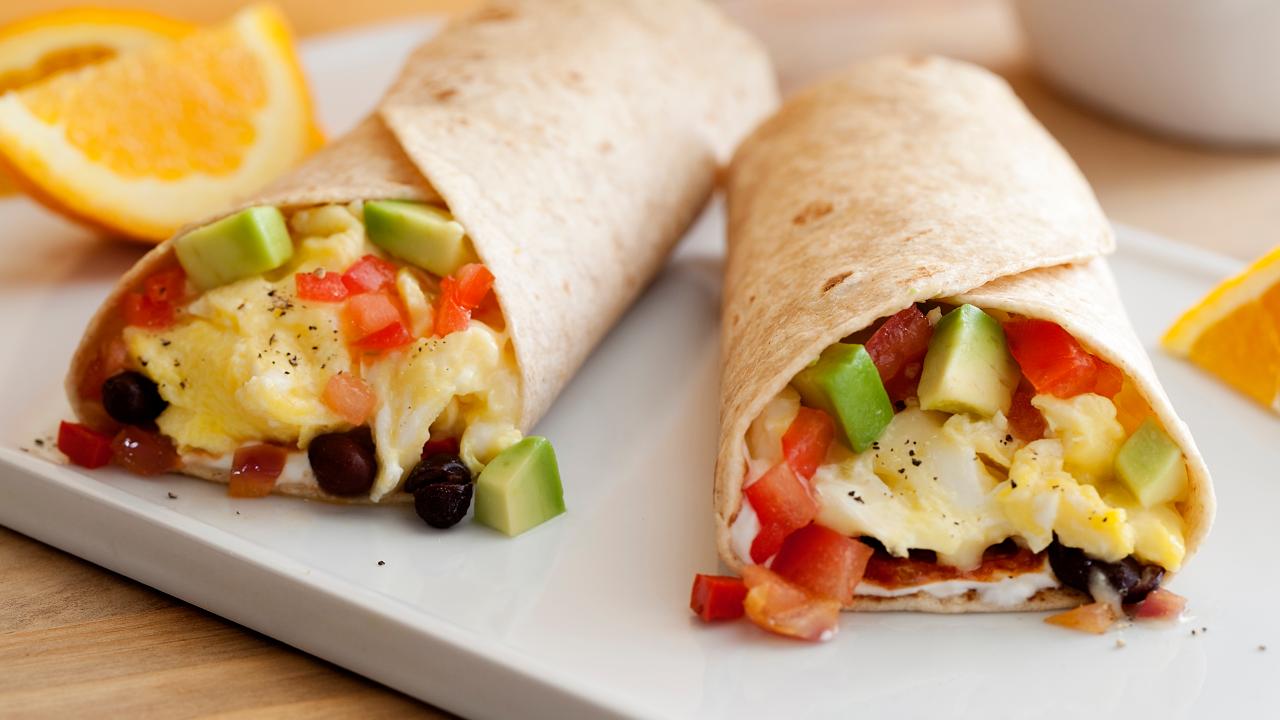
Breakfast Burrito Posted under: Recipes Breakfast Burrito 1 Chicken/Turkey Sausage Chopped 1 Whole Egg 2 Egg Whites 1 tbsp Chopped Red Pepper 1 tbsp Chopped Onion 1 tbsp Salsa 1 tsp Chopped Cilantro Salt and
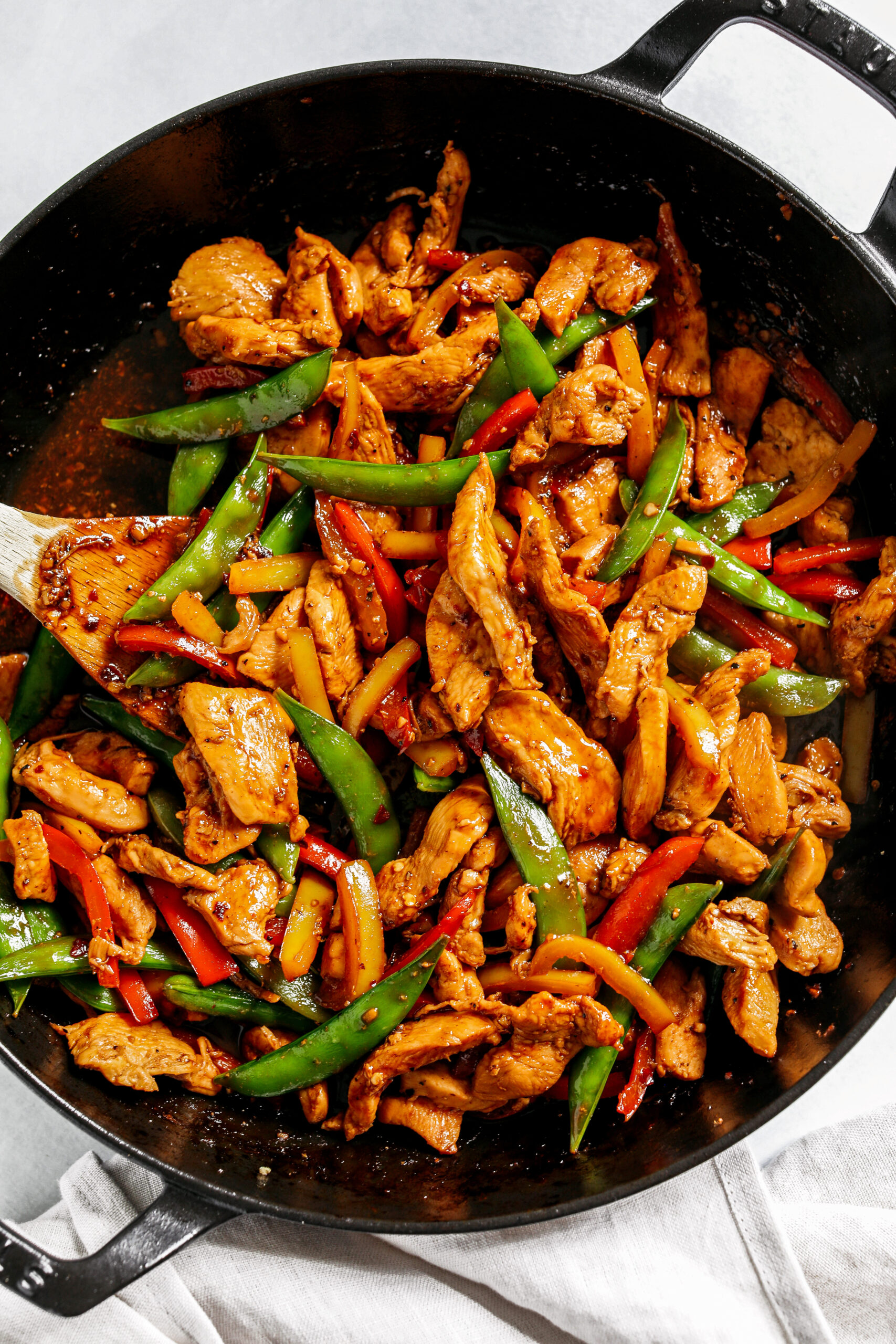
Chicken Stir Fry Posted under: Recipes Chicken Stir Fry 4oz Cooked Sliced Chicken Breast ½ cup Broccoli (blanched or microwaved to partially cook) ½ Med Red Pepper Sliced ½ Med Green Pepper Sliced ¼ Med

Beef Eye of Round Posted under: Recipes How to prepare Eye of Round Beef is a great source of protein but most people stay away due to the fat content. All beef is not
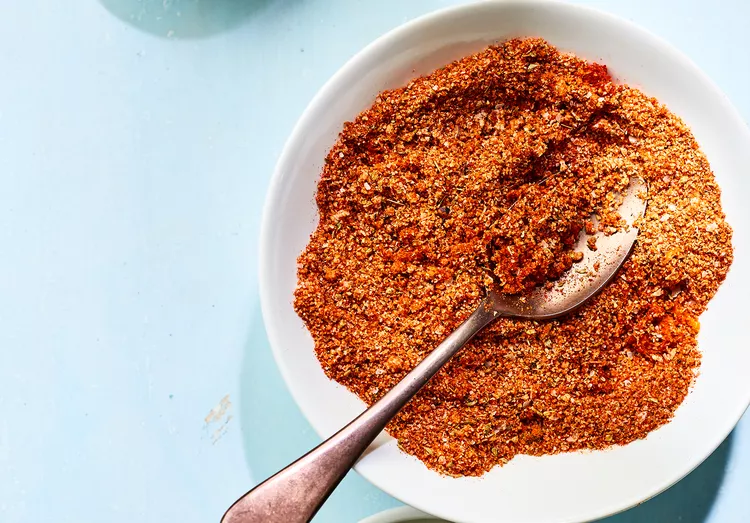
All purpose spice rub Posted under: Recipes Emerge all purpose spice rub This rub goes well with everything from chicken and beef to any type of seafood or fish. This is a pretty basic
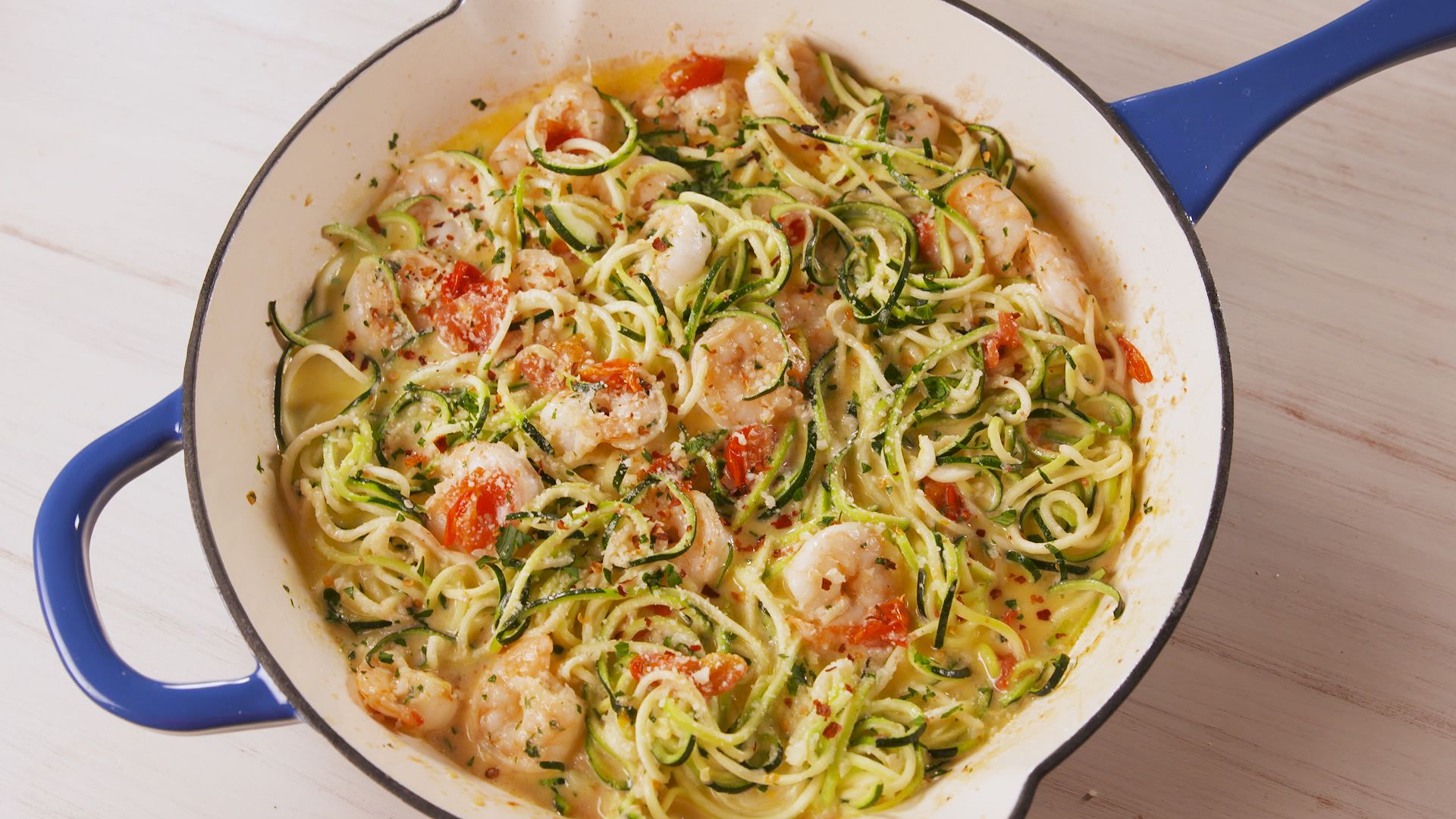
Shrimp with Zucchini Fettuccini Posted under: Recipes Shrimp with Zucchini Fettuccini I love pasta, however I tend to keep my carbs quite low in my diet most of the time. I came up with
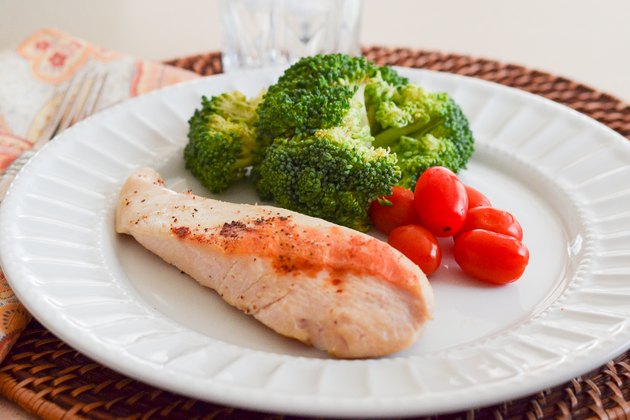
The Basics Of Precooking Chicken Posted under: Recipes I always include chicken breast in clients diets, unfortunately most people cook the hell out of chicken and are left with a dry piece of meat that

Scrambled Eggs Santa Fe Posted under: Recipes Scrambled Eggs Santa Fe This is a quick, easy and tasty way to start the day. In a bowl combine: 2 whole eggs 1 tbsp of
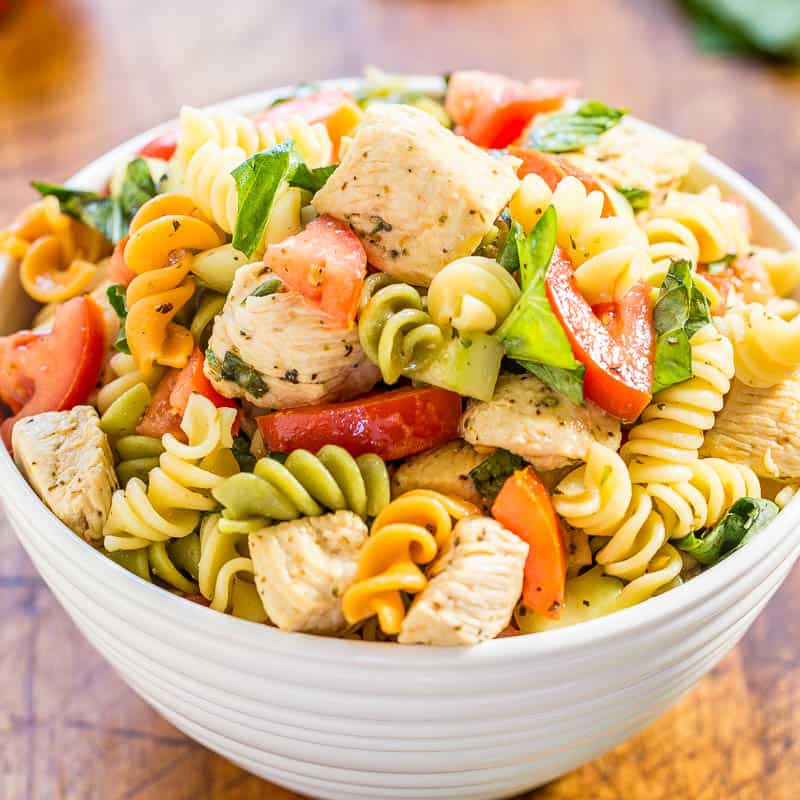
Italian Chicken Pasta Salad Posted under: Recipes This is a hearty but light salad that will give you plenty of energy Vinaigrette (0g of protein, 2g of carbohydrate, 14g of fat): 1 tsp
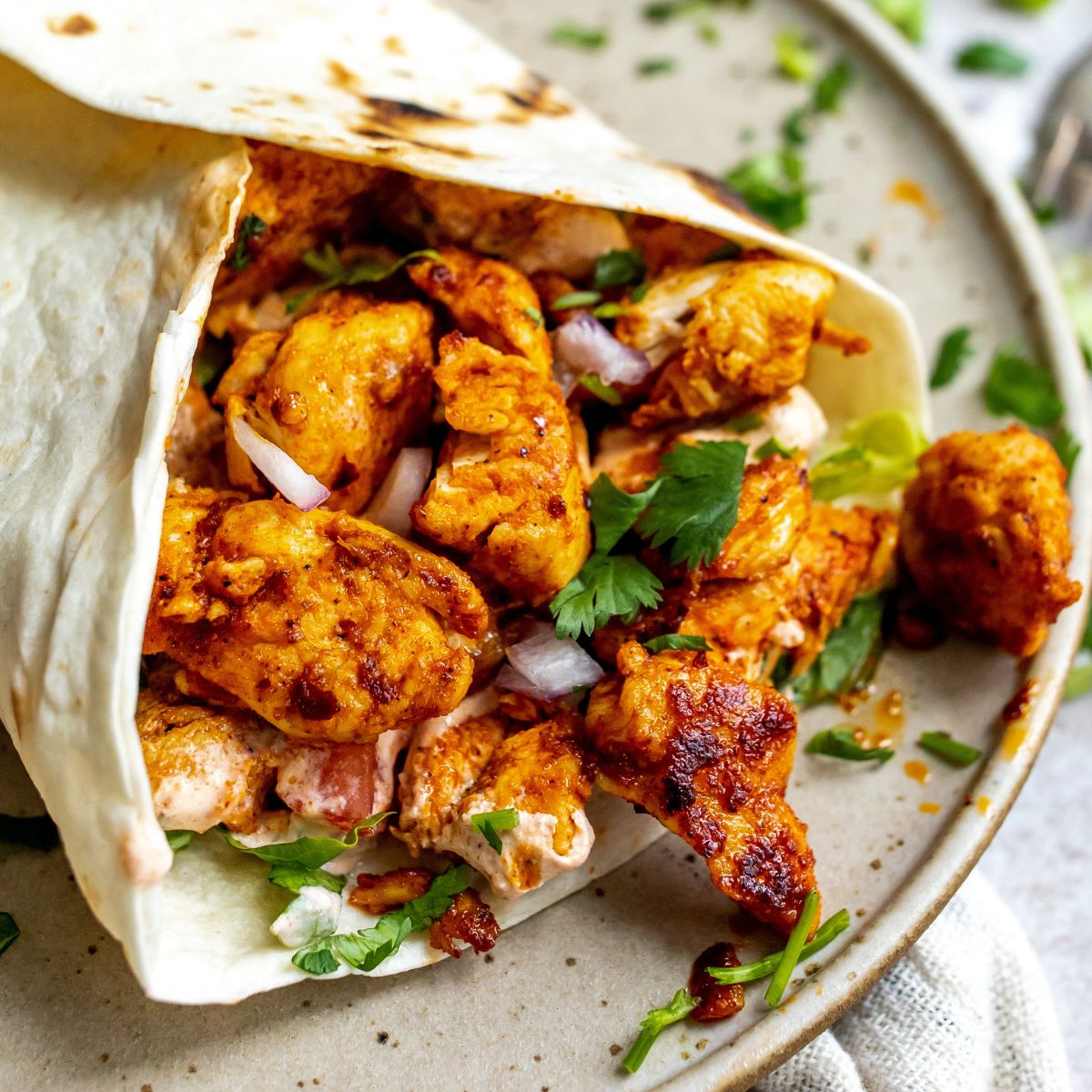
Cajun Chicken Wrap Posted under: Recipes Cajun Chicken Wrap This wrap is very portable, big and filling. In a hot non stick pan add: 2.5oz sliced chicken 1/3 green pepper, sliced 1/3 red
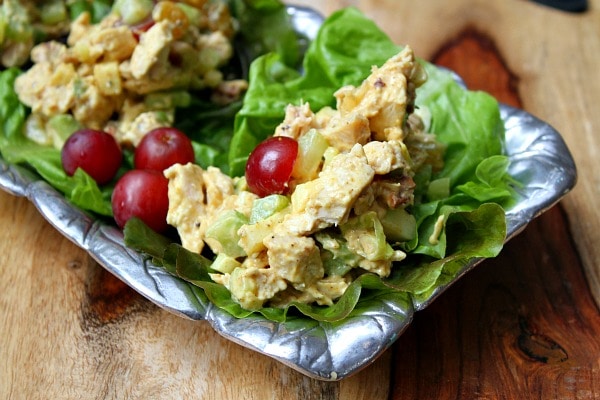
Chicken/Fruit curry salad Posted under: Recipes Chicken/Fruit curry salad This is sweet and tangy with a very fresh cool taste, ideal for a hot summers day . In a bowl combine: 2” section
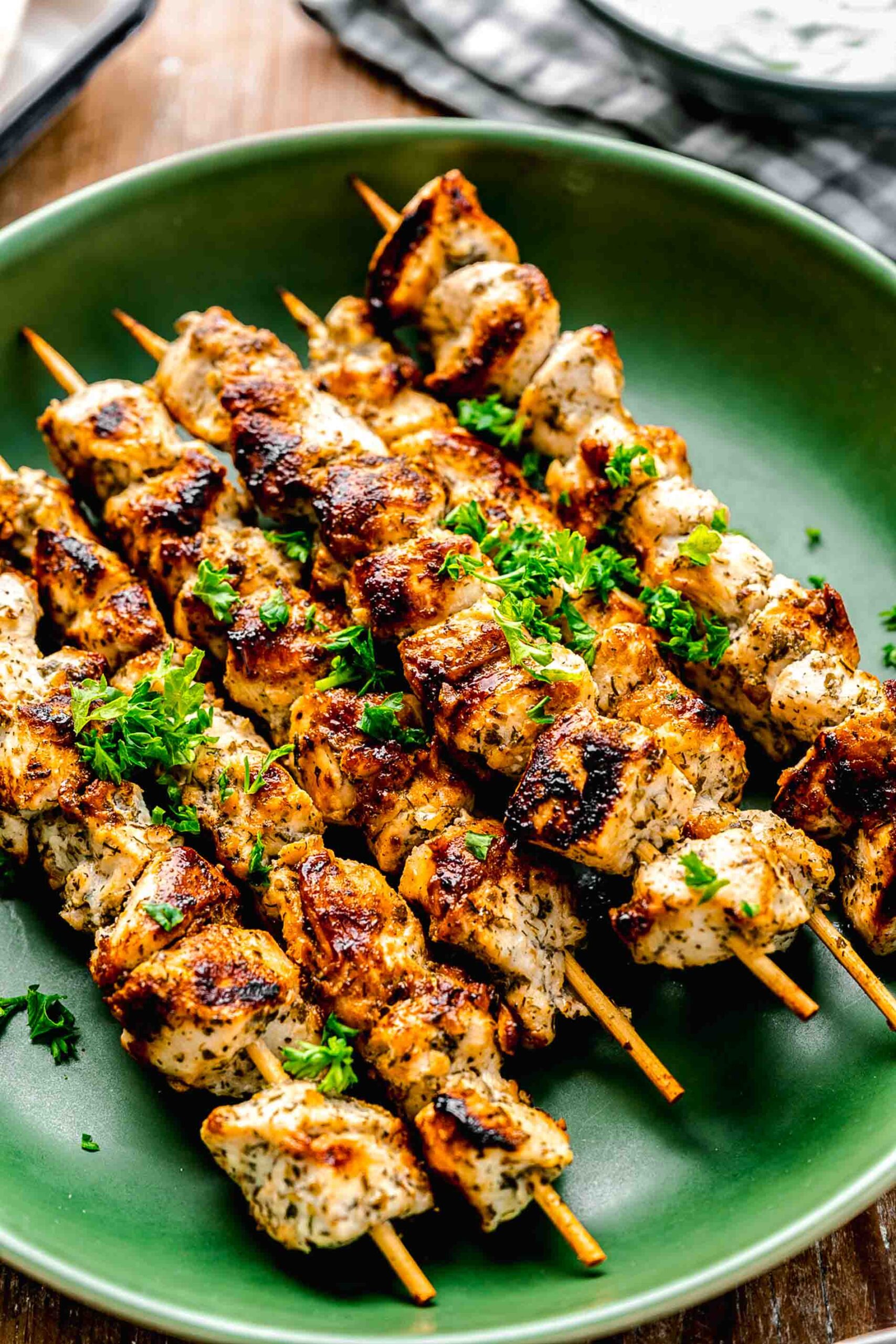
Chicken Souvlaki Posted under: Recipes Chicken Souvlaki You can replace the rice in this meal with a Greek style pita for a more portable meal. You can also use lean pork tenderloin with all
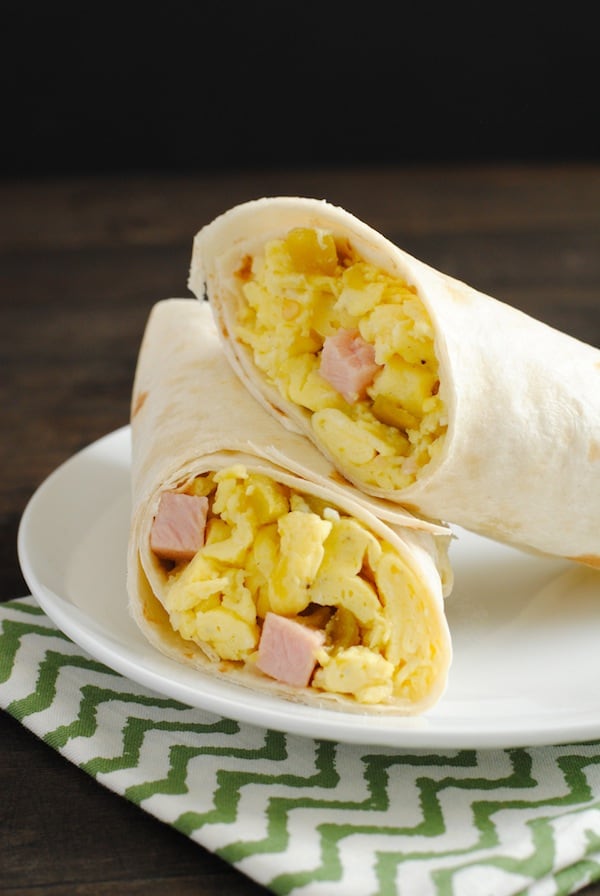
Ham Egg & Cheese Wrap Posted under: Recipes This one is a great way to start the day and a much better alternative to the drive through breakfast sandwich, and probably even faster. 1 large
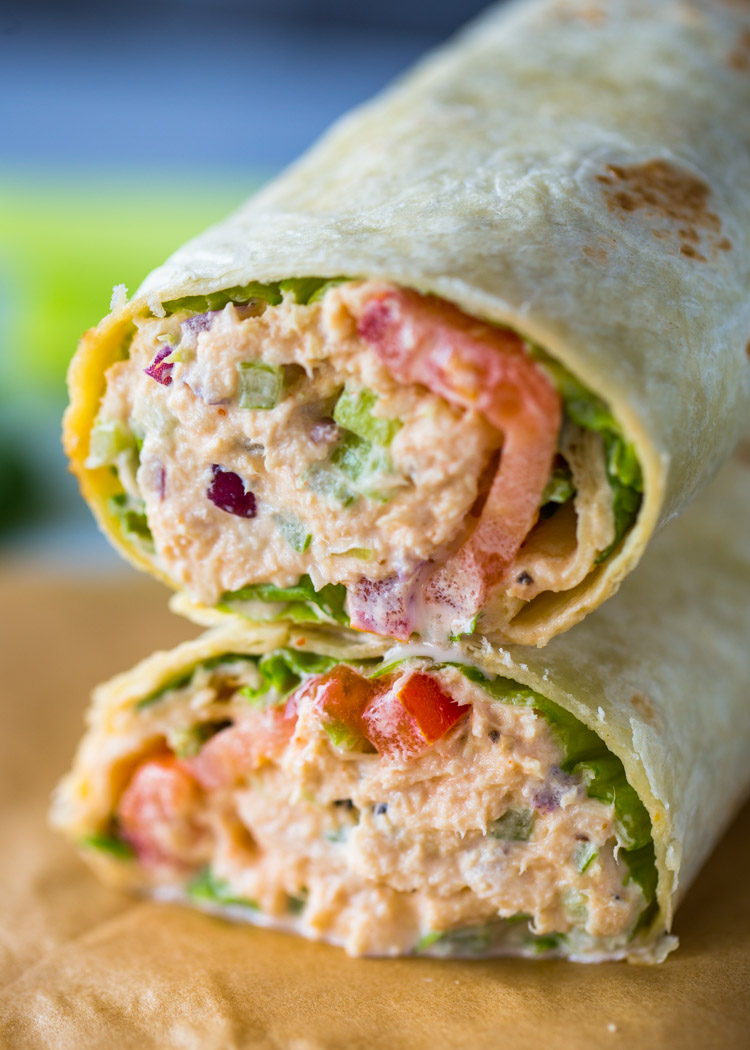
Tuna Salad Wrap Posted under: Recipes This is another quick one for any time of the day, if you want to take this one to a new level use fresh tuna that you grill or
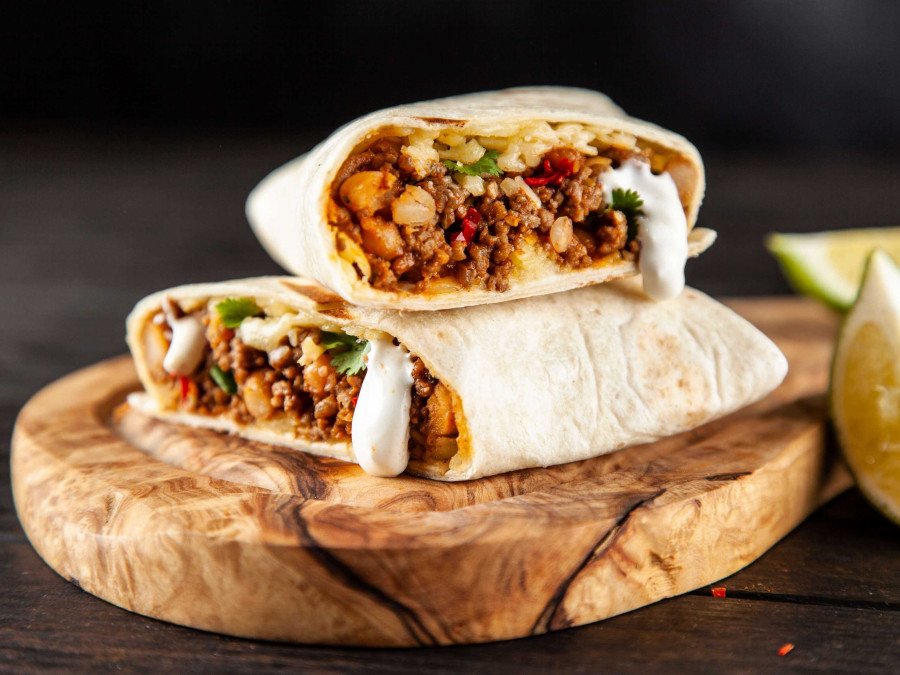
Mexican Beef Wrap Posted under: Recipes This one is a little more work and can be made spicier with a chopped jalapeño or cayenne added. I left it tasty but on the milder side. This
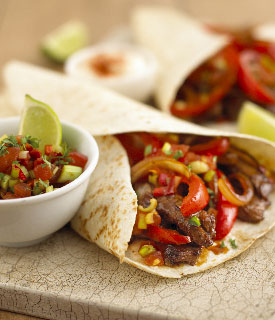
Beef Stir Fry Wrap Posted under: Recipes This is a simple Asian(ish) stir fry that you can eat on a rickshaw. This could also be hot or cold and would be good either way. You
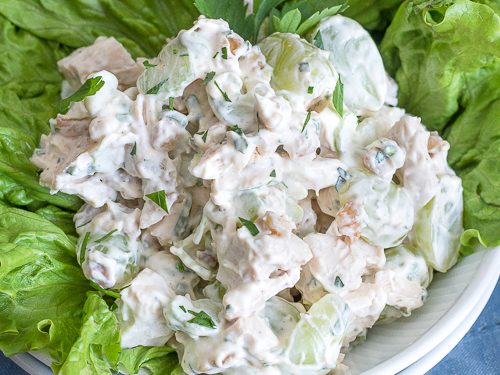
Chunky Chicken Salad Posted under: Recipes This is a salad I make quite often, especially when I am cutting my carbs a lot. I would just have the salad without the wrap and I am

The mighty egg is known to be one of the purest forms of muscle-building protein there is. This nutritiously dense animal-based food can be eaten a million different ways and it’s undeniably the most popular

Ronnie Coleman is widely regarded as one of the greatest bodybuilders of all time, winning a record eight Mr. Olympia titles. His sheer size, conditioning, completeness, and freak factor made him untouchable during his peak
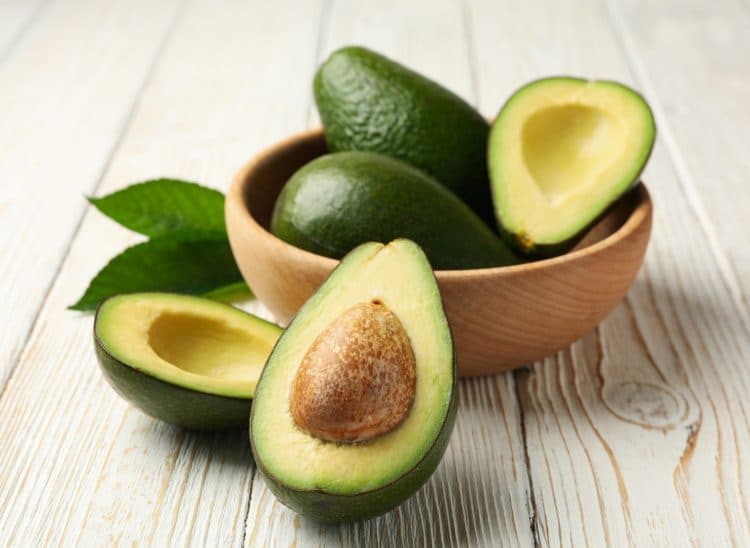
High-calorie, low-carb foods fit perfectly with any diet plan that seeks to tweak macros for various reasons. Whether you follow a keto eating regime, or you like to keep things low-carb at certain parts of

A frequently asked question in CrossFit training is how to formulate an efficient recovery plan? All the training in the world won’t help if athletes are not taking care of their bodies between workouts. An
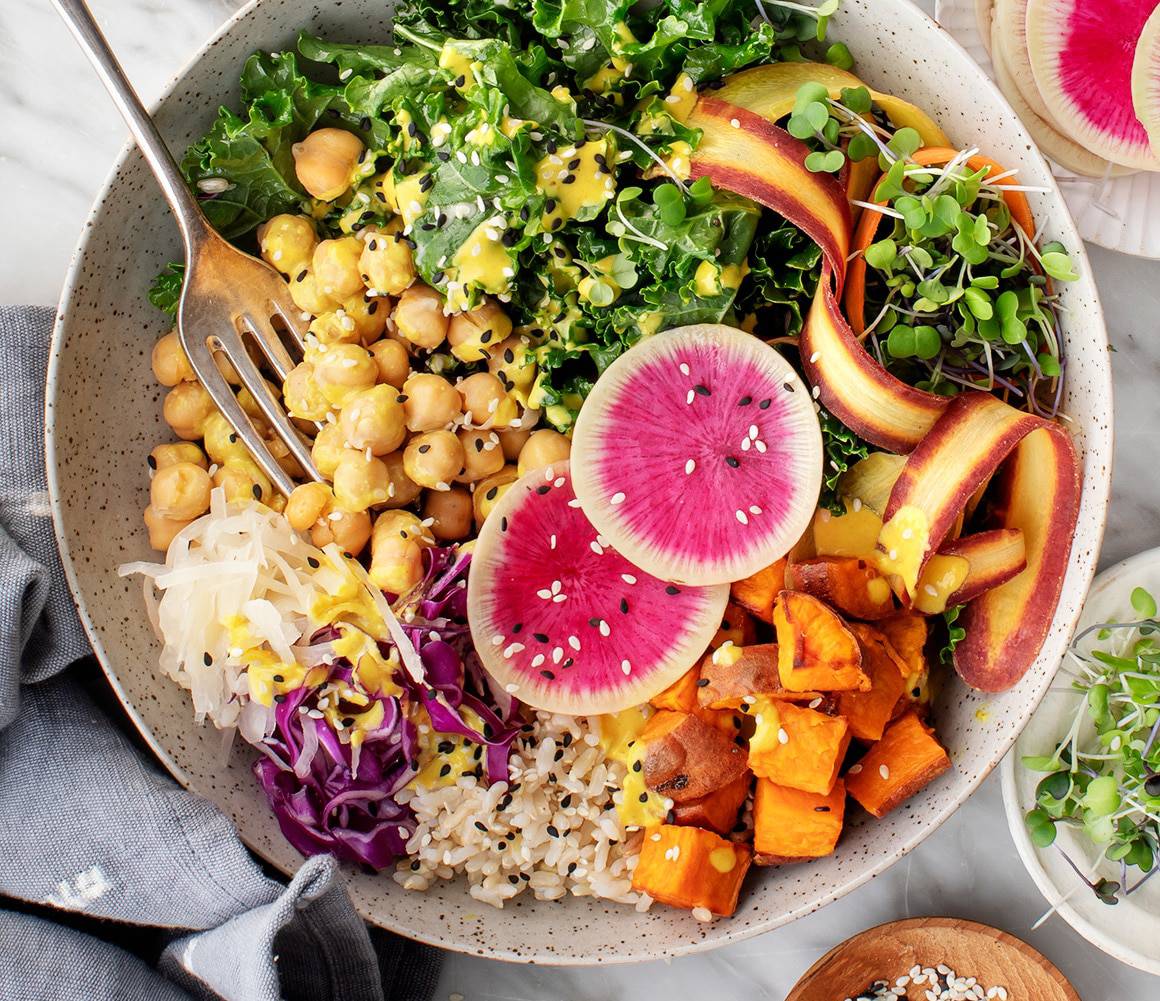
A recent craze making waves among top strength sports athletes, is the idea of a plant-based diet. However, not everybody is on board with this new way of thinking. So which option is the best? Today,
Total results: 200+
Primer to Nutrition
(click to expand)
IIFYM
Also known as “If It Fits Your Macros” or “Macro Counting”
IIFYM helps users lose weight by tracking macronutrients (protein, fat, and carbohydrates) without restricting food choices. Macros are the only place calories come from so by hitting macros, users inherently hit weight loss calories. If I told you that you could eat whatever you want, and while doing so, could burn fat, build muscle, and improve your health while doing so… To “some degree” the answer has to be “yes”.

This is why most people are attracted to IIFYM and Flexible Dieting. They hear that they no longer have to eat just “healthy” diet food to lose weight and they are ready to jump in feet first. Pizza, tacos, and lasagna while losing weight?
The trouble is, when eating processed foods, it is almost impossible to know exactly how much of each macro nutrient you are getting from the food. Not to mention what other “additives” or seasoning has been added to the food. This makes over eating all too common place when doing IIFYM diets, unless you are making “cleaner” choices… In which case, you may as well stick to “Clean Eating”.
The truth is something we all know but rarely like to think about. Eating too much food makes us fat (calorie surplus). Nothing else, no matter how much we want to believe that we have poor genetics, a low functioning thyroid, or a damaged metabolism, the truth is that if we eat too much, we gain weight.
When we move away from foods that we enjoy in order to clean up our diets and pay no attention to calories, we automatically reduce our calorie intake. Removing sauces, sweets, and fried food reduces calories due to simple math. Same goes for cutting out carbs after 5 pm. No magic there. Just less food.
IIFYM speaks specifically to fat loss from a macro nutrition and thus a caloric standpoint and is purely a means to improve body composition. IIFYM does not address health concerns of the heart, brain or other organs and does not put an emphasis on so called ‘healthy eating’.
IIFYM fans are posting pics of themselves eating things like chocolate, french fries, and waffles (in addition to healthier foods, of course), making this lifestyle look pretty fantastic:
But as with most diets (and IIFYM is a diet, even if the goal isn’t explicitly to lose weight), there are some potential drawbacks. The foods you choose make a difference. For example, IIFYM fans could choose less healthy options like fruit juices instead of whole fruits, refined oils instead of healthy fats, and refined carbs instead of whole grains. “While gummy bears may fit your carbohydrate allotment, eating brown rice or oats would be a healthier carb choice,”. The foods you choose can also impact your blood sugar, how full you feel, and your overall energy levels, Also, insulin sensitivity is a BIG factor for ideal fat loss results. Which may put IIFYM at a disadvantage for some people.
Also, tracking what you’re eating might be too much for you to follow or even make you focus on food in a way that starts to feel unhealthy. Of course, IIFYM allows people to indulge—a big perk if you’ve struggled with more restrictive diets. But it can still be too much food-based analysis or calculation for some people, making it hard to sustain in the long run. Plus, you can carry that indulging-is-great mindset over into your lifestyle without needing to track your macronutrients or calories.
The bottom line is that no matter how you eat, the rules of fueling your body in a healthy way remain the same. Just be sure to focus on food quality, with an emphasis on vegetables, fiber, and high-quality protein, choosing whole foods over heavily processed foods.
Clean Eating
Also known as “Bro diet” or “Slow carb”
Clean Eating has one of two views when mentioned, it is ether completely stupid, or is the only diet to follow if you are serious about health and losing weight. For those of you unaware, a strictly “bro-diet” is a diet plan that pretty much restricts almost all fun, flexible and processed foods. It got its name from the old-school, gym fad followings that are now known as a “bro”, and puts people under the impression that consuming strictly micronutrient dense, wholesome food sources will elicit better results than the IIFYM (flexible dieting) approach.

The traditional bodybuilder diet is usually reduced to a handful of weight loss foods These are commonly referred to as ‘clean’ foods:
- Chicken & turkey breast
- Whitefish (grilled)
- Steamed vegetables
- Brown rice
- Rice cakes
- Oats
- Protein Shakes
- Egg whites
- Almonds / nuts
- Barries
The basic philosophy is avoid all “white” or starchy carbs like bread rice and white potatoes. Eat the same or similar meals every day, this is for ease preparation and more chance of sticking to the diet. Prepare you food ahead of time, this way there is always food around to ensure diet adherence.
Draw backs to this diet approach are avoiding “fun” flexible foods all of the time, is not easy or fun. However, for those individuals with “self control” issues, this is the best diet option, as IIFYM will be next to impossible for someone with these control issues.
Most wholesome, unprocessed “bro” foods are going to be the most micronutrient dense and nutritious. There’s no hiding the fact that a fresh piece of fruit or a baked sweet potato is going to provide more nutritional benefits than a candy bar. Sure, a lot of processed foods are going to provide micronutrients that unprocessed foods do. Not to mentions the “volume” clean foods that can be eating, in comparison to processed foods, will leave you “fuller” and more satiated / satisfied.
Almost all coaches in the fitness industry, tell their clients to receive a majority of their calories from wholesome, nutritious foods. We don’t say it to sound as if we are following old school protocols, we say it because it is best.
Ketogenic Diet
Also known as “Atkin’s” or “Protein diets”
These types of diets generally want you to consume very few carbohydrates over the course of the day. Usually the magic number is around 30 grams for the day, the rest of you calories will come from protein and fat.
You can lose a lot of weight within the first few weeks of this type of diet, the thing is it is mostly water weight. This is due to the fact that your body depletes its glucose and glycogen stores. When this happens your body slips into ketosis, this is when your body starts to convert body fat and dietary fat to ketones. The water weight returns quickly when you start to consume carbohydrates again, but it is just water, not fat.
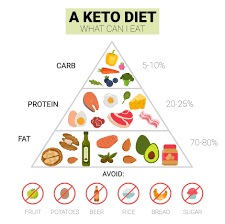
There are many types of ketogenic diets, some where you introduce carbohydrates for a day or two a week to help maintain and or build muscle. Cycling your carbohydrates when on a ketogenic diet is a body building type diet where your muscles will super compensate and retain more carbohydrates and water making your muscles appear larger and fuller.
Many people find lower energy levels when on a keotgenic diet, and a flat feeling in the gym. Since you have no carbohydrates in your system you will not get a pump when you work out and this can mess with your mind somewhat.
Often, you eat anything that doesn’t contain carbohydrates and as much as you want. However, If you consume too many calories, you will not lose fat. Calories are calories. If you consume too much saturated fat, you will store fat more readily. Yet everyone is eating bacon and eggs for breakfast and fatty steaks or burgers and butter the rest of the day. This is not ideal, choose lean protein sources and mainly essential fatty acids.
A major drawback with the ketogenic diet is that most people will make a minor cheat and eat a carbohydrate source. Because it can take up to 72 hours to enter into ketosis, this can screw up days of sticking to the diet. Once you eat too many carbohydrates (like a slice of bread), you are kicked out of ketosis and may take up to 4 days to get back in.
This approach is usually reserved for those in “contest prep”, or for those with sever weight problems which are now causing they major health issues.
Related posts…
The key to success with your diet is to plan ahead. If you know you are going to be eating three pounds of chicken breast over the week, then you should precook all your chicken for the week and store half in the refrigerator and the other half in the freezer. As the week goes on and you start to get low on your chicken, you thaw the cooked chicken from the freezer. The same can be done with vegetables that you need to chop or slice and any rice or pasta you will need cook.

If you take a few hours one day of the week to do all this prep work, it will save you many more hours during the week preparing meals. It will only take you a few minutes to weigh and measure each of your meals for the following day before you head to bed each night.
Using my own fridge for example, if you look in there you will see many zip lock bags with different vegetables chopped up in each one. All I have to do is take a measured scoop of this and a measured scoop of that to prepare each meal. I will also have a plastic container of cooked whole wheat pasta that I will use either cold or reheated. There is always a container of boneless skinless chicken breasts, usually grilled and lightly seasoned. This way, I can alter the seasoning depending on the dish I am going to put them in.
There will also be containers with the meals I have prepared for the next day or few days depending on how ambitious I am. Obviously, I have other items too. However, this will give you some idea of how to keep things ready to go at all times. It may seem like a lot of work in the beginning but most of my clients find that after the first week they realize that it is an overall time saver.
Related posts…
Cheat meals are a nice way to keep your sanity and that is about it. The theory behind a cheat meal a week is to keep your metabolism from dropping due to consuming low calories all week. Well that one meal isn’t going to change a thing in that regard. It may not do a lot of harm either so what’s the concern?
The thing is that most people who have a cheat meal do one of two things. They either eat an insanely massive dirty meal or they have a cheat day. When you do this, you will generally have a negative effect, but if it is a clean(ish) meal that is off your diet you should be ok. The cheat meal is exactly that, a cheat, and why are you cheating? To reward yourself for sticking to your healthy diet? Good thing we don’t look at marriage this way isn’t it. Guess what, we shouldn’t look at our diet this way either. That one cheat can ruin everything you accomplished over the last week, is it worth it? Not as far as I am concerned. Saying that…
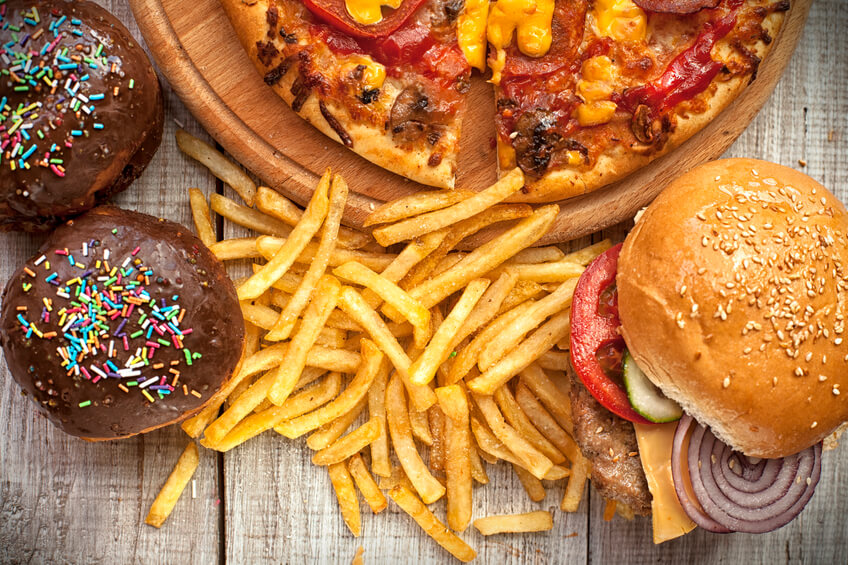
If you maintain single digit body fat all year round, you can get away with the odd indulgence. Most people, especially those that are just starting to eat properly and lower their body fat levels are not even close to being ready to get away with cheats. Your metabolism just isnt ready for it. It will take time to get it “fired up” to that level.
To get your metabolism fired up. You will need to be eating at least 6 small healthy meals a day for a month or two, ideally with no cheat meals for that period of time. This will get your body accustom to processing your food in an efficient scheduled manner. Once your body stops storing calories as fat from meal to meal and starts using them as energy and muscle repair, you are on your way to becoming a human furnace that burns through calories.
You need to train with weights at least 3 times a week, this will ensure you maintain and or build muscle while restricting calories. Basically, you require calories for your bodily functions and to feed your working muscles. The more muscle you have the more calories your body will burn, even when you sleep. For every pound of muscle you gain you require up to 100 additional calories a day to maintain.
Now, lets assume you have been resistance training 3 days a week and have been eating 6 small meals a day for the last couple months. You have been losing fat and have gained a few new pounds of muscle. You have now elevated your metabolism about as far as you are going to on your own. Its time to take it to the next level, here is where you look to supplements. By adding a fat burning supplement, you can kick your metabolic rate even higher. Choosing a fat burning supplement that addresses many areas such as thermogenisis, elevating thyroid output, shutting down fat receptors and increasing insulin sensitivity is the best approach.
Okay, so now you are dropping body fat even faster and maintaining your lean body mass. At this stage, you usually feel your body temperature rise shortly after eating as your internal furnace burns through the calories. You are now ready to approach cheating and get away with it.
This is the “meat and potatoes” of it, however, there are a few more little rules to follow. Make sure you eat your regularly scheduled meals before and after your cheat meal. Don’t try to starve all day thinking you can use the calories when you cheat later in the day. This will only make you store the calories more readily. Also, don’t fast for the rest of the day because of the extra calories you just consumed. Continue to eat every 3 hours after your cheat meal, but you might want to cut these meals down a little, especially if you are not that hungry. The main thing is we want to keep your body in a fat burning zone by eating every 2.5 to 3 hours, going any longer will just cause you to store calories.
Another way to ensure your cheat meal has the least impact on you, is to workout before your cheat meal. After you workout with weights, your metabolic rate is very high, this will help you burn through the excess calories that you consume.
These rules if followed should help you cheat as safely as possible, however everyone is different. People that are really lean are going to be able to get away with more than someone with a higher body fat level. Obviously, if you have been able to get your body fat levels really low your metabolism is fast, if you are having a hard time getting your body fat levels lower, then your metabolism still isn’t up to par so be careful.
At the end of the day, the best way to stay on track and not let a cheat meal affect your diet or progress, is to not have that cheat meal. Sometimes one cheat meal leads to another and another until you are no longer eating the way you should. For most people one cheat meal a week is fine, for others maybe more or less.
I hope this helps you and by the way try not to feel guilty after your cheat meal. Make up your mind before you eat and justify it then, if you can live with possible negative outcome then dig in and enjoy. If not, then don’t have it and regret it for days after, it’s not worth it.
Related posts…
Carbohydrates
1 gram = 4 calories
The type and amount of carbohydrates you consume will affect your diet dramatically. They offer both advantages and disadvantages, sometimes you need to consume lots and other times as little as possible. Carbohydrates are probably one of the most misunderstood of the macronutrients and are often eaten without regard as a low fat healthy food choice. The overeating of carbohydrates has helped lead to the increase in both obesity and diabetes, more so than dietary fat.
Carbohydrates are the body’s preferred source of fuel. All tissues in the body have the capacity to use glucose for energy. Some tissues, however, (notably the heart) prefer to use fats under normal dietary conditions. There are no “essential” carbohydrates. This means that the body can function normally in their absence. This is done by converting proteins and fats to glucose in the absence of carbohydrates in our diet.
Carbohydrates can be classified three ways:
- Monosaccharides: Simple sugars like glucose and fructose, these simple sugars can be found in honey and fruits
- Disaccharides: Sugars like table sugar (sucrose) and lactose. Lactose is a sugar found in milk
- Polysaccharides: Sugars often referred to as complex carbohydrates or glucose polymers. These include starches (dextrose, cellulose, pectin, and glycogen). These can be found in whole grain, vegetables, nuts, some fruits and legumes
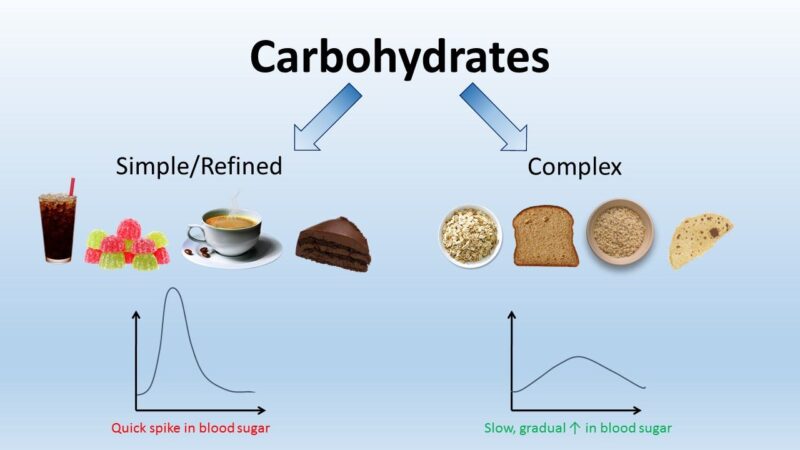
When carbohydrates are consumed, your digestive system converts them to blood sugar (glucose). The glucose is then stored as glycogen in your muscle cells and liver. When training at a high intensity, glycogen stored in your muscles is used to provide energy for muscle contractions. When intensity is low, your blood sugar is used as an energy source.
If you replenish carbohydrate stores (ingesting carbohydrates) prematurely while still having adequate levels of glucose in your blood, the remaining carbohydrates will be stored as fat. There is a reciprocal relationship between carbohydrates and fat oxidation (burning of fat). When carbohydrate burning goes up, fat burning goes down. Basically what this means is, when you consume carbohydrates, especially simple carbohydrates, your ability to burn fat is shut off until you use up the ingested carbohydrates.
Fibres are indigestible complex carbohydrates (Polysaccharides) and they provide no energy to speak of. They do, however, play an important role in our diet. This indigestible bulk helps promote efficient intestinal function and helps regulate absorption of sugars into the blood stream.
Fibre is found together with both simple and complex carbohydrates in various plant foods. These foods include, fruit, leaves, stalk, and the outer coverings of grains, nuts, seeds, and legumes. High fibre foods help keep you regular and help promote fullness, so you can eat less and be satisfied. Studies estimate the recommended daily fibre requirement should be between 40-60 grams. This can easily be achieved with the aid of a fibre supplement if need be.
To determine the best carbohydrate choices for our diet, we turn to the Glycemic Index (GI). The Glycemic Index is a rating system that was developed to tell us what carbohydrate sources provide the best energy over a prolonged period of time. It also tells us how fast various carbohydrates and other foods elicit an insulin response. Simple carbohydrates and complex carbohydrates can fall anywhere on the list depending on how refined the carbohydrates are. Sugar or glucose (a simple carb) for example have a score of 100, however instance rice (a complex carb) is 128.
Below is a list of various foods and how they rate according to the glycemic index, for a more complete list you can find various sources online.
| GI | FOOD |
|---|---|
| HIGH | |
| 109+ | Instant rice, baked potato, Cornflakes, Rice Krispies |
| 100-109 | Glucose, watermelon, white bagel, Cream of Wheat, maltodextrine |
| 80-99 | Nutrigrain bar, carrots, parsnips, potatoes (instant mashed), white rice, honey |
| 70-79 | Bread (white), Oat bran, Brown Rice, Weetabix cereal, broad beans (fresh), potatoes (new), Special K, Chocolate |
| MODERATE | |
| 60-69 | bread (whole grain), rice (brown), Muesli, green peas, Banana, All Bran cereal, grapes, peach, raisins |
| 50-59 | buckwheat, pasta (bleached), sweet corn, digestive biscuits, oatmeal biscuits |
| 40-49 | Pasta (whole wheat), oatmeal, Beans (canned, Navy), orange, peas (dried), barley, yams, parboiled rice |
| LOW | |
| 30-39 | butter beans, black eyed peas, milk (skim), milk (whole), apples and juice, kidney beans |
| 20-29 | lentils, yogurt, tomato, fructose |
| 10-19 | soybeans, peanuts |
You want to choose mainly moderate to low GI carbohydrate sources to provide a more stabilized blood sugar level. This will help provide sustained energy instead of having peaks of energy then crashing shortly after. There are times when you want to ingest a high GI carbohydrate, this would apply to your post workout meal.
After you workout, you want to release insulin as it is a potent anabolic. Insulin also increases the total quantity of protein in the body by increasing the flow of amino acids into cells. So it stands to reason that a meal of high GI simple carbohydrates and an easily absorbed protein is ideal post workout.
You can manipulate the GI rating of a carbohydrate by ingesting a protein or fat at the same time as the carbohydrate. Basically, foods that are high in protein or fat have a lower GI rating, when you combine these foods you lower the over all GI rating.
I feel that controlling your insulin levels while trying to lose fat or gain muscle is very important. You want to take advantage of the anabolic properties of insulin at the right time of the day and keep your insulin levels low for the rest. You should always be thinking about this fact when constructing your diet, do you need to be in an anabolic environment at this time or a fat burning one? Your carbohydrate source is going to be based on this answer.
The following is a list of food choices that are moderate to lower GI complex carbohydrates, these foods will help maintain blood sugar levels and give you a steady supply of energy:
- Old Fashioned Oatmeal – I am not talking about the oatmeal that comes in a little pouch and tastes like apples and cinnamon. I am talking about the stuff that you could plaster a wall with. Only buy oatmeal that is 100% rolled oats, there should be nothing else in the ingredients. Oatmeal should be a staple of your diet, I have all my clients start their day with it. Ideally you do not want to add any sugar, if you need to add something throw a few berries in instead.
- Yams/sweet potatoes – Choose yams over your average white potatoes. They are both complex carbohydrates but the yam has a lower GI. You still get the comfort factor of a potato texture without the insulin release.
- Whole wheat foods – If you are going to eat bread and pasta, stick with the mixed grain or whole wheat varieties. Whole wheat pasta is higher in fibre as well as having a lower GI than regular pasta. With whole wheat breads, make sure you read the ingredients on the bag, often bread will appear to be whole wheat but the first and main ingredient is actually white flour. The first and main ingredient should be whole wheat flour. Remember the more refined a flour is the higher the GI.
- Rice – Your best choice with rice is to choose long grain brown rice from a nutrition standpoint. It’s a little more effort to cook but it is also more flavourful and better for you. The cooking time isn’t an issue since you are preparing all your foods ahead of time anyway, right? If we are just looking at food from a GI standpoint and fat loss stand point your typical long grain white parboiled rice is actually lower GI than the brown rice so it is definitely an option.
- Beans – There are various types of beans (kidney, Lima, black eyed peas and chick peas to name a few) that are low GI and can fit into many types of meals. They are a great way to get a hearty starch into your diet to help provide energy without worrying about the insulin spike caused by many starchy foods. You can buy your beans dried or in canned form, personally I like the convenience of the canned beans, as they are ready to go after a rinse. The canned variety does however have a higher GI rating due to the high temperatures the beans are processed at prior to canning.
- Fruit & Vegetables – Fruit provides vitamins, minerals, and fibre. Eat some fruit but avoid fruit juices! Fruit juice is an easy way to over consume calories and increase body fat. I am talking mainly about fruit juice from concentrate. The processing reduces the fibre and nutrients and whole fruit is more filling. If you must drink fruit juice you are better off making it yourself.Vegetables speak for themselves. We have been told they are good for us from day one, and they are. Like fruit, they also provide vitamins, minerals, and fibre. The general rule of thumb with vegetables is the darker the colour, the more nutrients they have. They are also a great way to add bulk to your meals if you are reducing your calories. Just keep in mind that you want to stay away from the root vegetables as they are higher in calories and glycemic rating.
Protein
1 gram = 4 calories
Protein makes up nearly half of the dry weight of your body. Studies have shown that within six months every protein molecule is broken down and completely rebuilt. As well, the more intensely you train the more protein is required for repair and growth.
Although protein isn’t converted to body fat as easily as carbohydrates and fat, consuming more protein than your body can utilize will result in fat storage. Also, too much protein can result in the formation of a toxic ammonia called urea. Since urea is excreted, an overabundance puts added strain on your liver and kidneys. Studies have shown however, that this is only the concern of individuals with pre-existing liver or kidney problems, or a family history of them.

How much protein is too much? How much protein is just enough? This depends on our activity level as well as the individual. I have found through my own experimentation over time that I can consume and utilize a significant amount. I have taken as much as 2.5 grams per pound of body weight in a day. My days were long and active (16 hour work days with 15 one hour clients per day) and I would consume about 10 meals a day at approximately 30-40 grams per meal.
You can generally consume and process up to 40 grams of protein per meal, obviously the smaller the individual the smaller the amount of protein they can process. Like choosing carbohydrates in your diet, you want to look at protein absorption rates. You want to have proteins that are absorbed quickly at certain times of the day and proteins that are broken down and absorbed more slowly at others.
Whey protein is generally absorbed quickly. There are however different types of whey that have faster and slower rates. Other protein sources like that found in meat or dairy products, are broken down and absorbed more slowly. Using this information, you can construct your diet with these absorption rates in mind.
I generally design diets with a moderate to high protein ratio in them. Since protein is the building block of muscle, I always approach a diet with the objective of maintaining and/or increasing muscle mass. The body has to work a little harder to process protein than it does for carbohydrates or fat so more calories are burned in the process.
When you consume protein, the molecules are broken down into amino acids. There are 24 amino acids that make up the human body. Of these 24, 8 are essential (your body can’t manufacture them) and must come from your diet. When any of these essential aminos are missing from your diet, your body’s rebuilding process is less effective. The best protein sources of protein have an amino acid composition that most closely approximates the make up of the human protein.
Protein sources are classified as:
- Incomplete proteins: such as fruits and most vegetables
- Complete proteins: such as meats, eggs, milk
The following chart shows the biological value of protein in common protein sources:
| PROTEIN | BIOLOGICAL VALUE |
|---|---|
| Whey concentrate & Isolates | 104-159 |
| Whole Egg | 100 |
| Milk | 91 |
| Egg White | 88 |
| Cottage Cheese | 84 |
| Tuna | 83 |
| Fish | 82 |
| Beef | 80 |
| Chicken | 79 |
| Soy | 74 |
| Casein | 71 |
| Peanuts | 68 |
| Yogurt | 68 |
| Oatmeal | 58 |
| Wheat | 58 |
You can see by this chart that your protein source is very important. Don’t just add any protein to your diet. Choose a quality source that helps repair and rebuild your body’s tissues. Not only do you want to consider the BV of the protein but also the amount of fat that comes with that protein. Always choose the leanest cuts of meat like skinless chicken or turkey breast and inside eye of round beef for example.
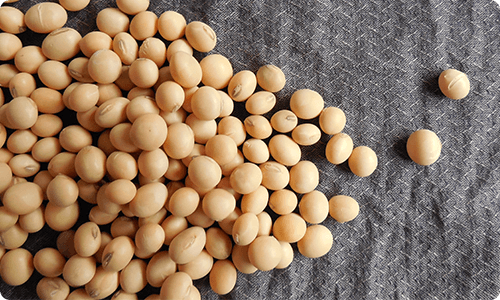
One protein source I would like to address specifically is Soy Protein. There are many health benefits that soy protein offers to women, like helping with osteoporosis to menopause. However, for men, it may not be something you want to consume a lot of.
A Harvard Medical School study placed 11 men on a soy-based diet that included 40 grams of soy protein daily. Testosterone levels were measured at baseline and at 6 months intervals for 18 months. Soy, a phytoestrogen, caused the participants testosterone to be depressed by up to 76% after the 18th month mark. One thing to keep in mind, is that the dietary fat was also quite low and has been shown to also lower testosterone levels. However, there have been other studies that have shown elevations in the estrogen levels in men consuming high soy-based diets.
Low testosterone levels and raised estrogen levels spell higher body fat levels and a harder time building muscle for men. Soy may be a double-edged sword, good for women but may not be so good for men.
Fats
1 gram = 9 calories
Fat is not always the “bad guy”. We need fat for many reasons. Fat acts as a storage substance for the excess calories we consume, not just calories from fat but also carbohydrates and proteins. Fat is vital in maintaining healthy hair, skin, and transports fat-soluble vitamins A, D, E, and K. Fats also provide us with essential fatty acids that our bodies can’t produce (more on those later). Fat aids in many bodily functions including regulation of cholesterol in your blood and regulation of blood pressure.

Often referred to as lipids, fats can be in solid or liquid form. Despite carbohydrates being your body’s preferred fuel choice, fats are the most highly concentrated fuel choice over protein and carbohydrates. This is why foods high in fat are higher in calories.
The important thing to know about fats is what kind and how much we should include in our diets. Too much and we store excess body fat, too little and we impair bodily functions and even impair fat loss. You see your body naturally wants to keep body fat around in case we run into times of famine. Not just for the excess calories but for the proper function of organs that require fat.
If you don’t consume enough dietary fat, your body will want to continue to hold on to stored fat. On the other side of that coin, if you have an adequate supply of dietary fat your
body will release fat stores. Since you are getting a constant supply of fat, there is no point in carrying around excess weight in the form of fat. Knowing this we want to ensure we get enough fat in our diet, but we want to make sure it is the right kind of fat to reduce the chances of storage.
Fats are found in combinations of saturated and unsaturated fatty acids.
Saturated fats:
- Animal sources: like meat, milk, and butter. Vegetable, coconut and palm oils are also highly saturated With the exception of these oils saturated fat is usually solid at room temperature.
Unsaturated fats:
- Monounsaturated fats: such as olive, peanut and avocado oils
- Polyunsaturated fats: such as corn, sesame, and safflower oils.
Unsaturated fats usually remain liquid at room temperature. There is sub group of fats often ignored, these are called Essential Fatty Acids. Essential fatty acids (EFA’s) are part of the unsaturated fats group.
Essential Fatty Acids:
- Omega-6 or linoleic acid: Found in margerines, shortening, partially hydrogenated vegetable oils
- Omega-3 or alpha linolenic: Found in flaxseeds, and in cold water fish such as, salmon, sardines, albacore tuna, mackerel and rainbow trout.
Although your body can make up different kinds of fats, it can’t make up omega-6 or omega-3. They have to be supplied through the diet, hence the term “essential”.
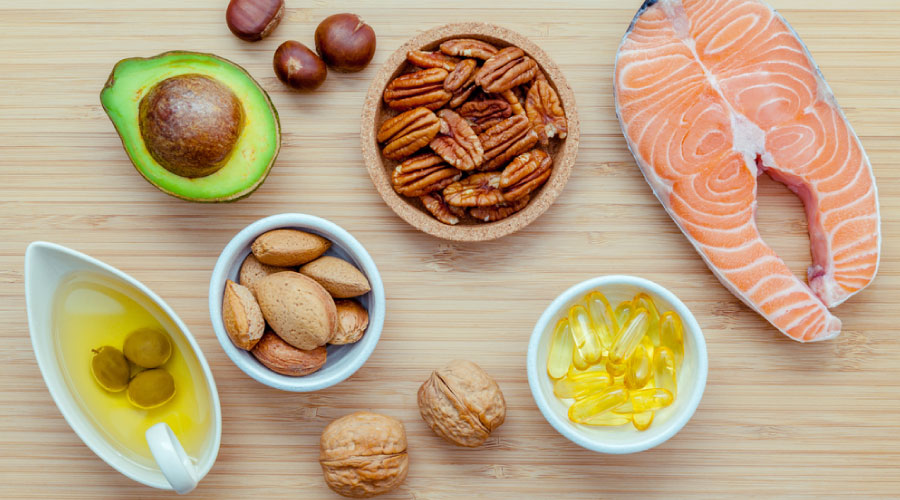
These EFA’s may help you lose fat and build muscle, as they are involved in the production of anabolic and growth hormones. Today very few people get enough EFA’s in their diets to benefit from them. Well to be more accurate, the average North American consumes enough omega-6. Unfortunately, it’s usually been highly processed and often filled with free radicals and trans fatty acids.
Trans fatty acids can contribute to heart disease, lower immune responsiveness, decrease testosterone and damage insulin responsiveness. If you see the words hydrogenated or partially hydrogenated on a product label, they contain trans fatty acids in there and you don’t want to purchase it.
It is important to maintain a proper balance with our dietary intake of omega-6 and omega-3 fatty acids. Since we consume enough omega-6 in our diets already, we must ensure that we supplement our diets with omega-3. Flaxseed oil is the best source of omega-3 fatty acids available. A couple tablespoons a day is recommended to aid in the balance. An easy way to get the proper balance of EFA’s is to use blended oils like “Udo’s Choice Perfected Oil Blend”. Keep in mind when you are supplementing your diet with oils, they still count towards your daily calorie intake, generally a tablespoon of oil is around 14 grams of fat or 126 cals.
Good fat choices are:
- Udo’s Choice Perfected Oil Blend (or similar blend) – This is a great product, it has a mild flavor and can be used in a vinaigrette dressing that makes it an easy addition to any diet. It contains the perfect balance of EFA’s that our bodies need. Do not heat this oil or expose it to light, once opened it must be stored in the refrigerator.
- Natural Peanut Butter – I don’t mean Skippy and Jiffy type peanut butter. Those processed peanut butters have additives like corn syrup solids, hydrogenated oils and sugar. I’m talking about the natural stuff, just peanuts and salt. This peanut butter has a layer of oil formed on the top of the jar that has to be mixed in then refrigerated. If the fat is an issue for you, you can pour some of the oil out, but I would keep it so you know how much fat you are consuming per tablespoon. Peanuts may be high in fat but only 2 out of 14 grams of fat are saturated. Don’t be fooled by “light” peanut butter, this is still processed. Just stick with the natural kind.
- Flaxseed Oil – Flaxseed oil is high in omega-3 fatty acids, in fact it is probably the best available source. It is unstable oil, in that it must be stored in a cool dark environment and must be refrigerated once opened. Diets high in flaxseed oil may create an imbalance between the omega-3 and omega-6 fatty acids, keep this in mind if you choose to supplement your diet with flaxseed oil. Like the Udo’s Choice oil, flaxseed oil should also not be heated.
- Peanut Oil/Grape Seed Oil – For cooking, peanut or grape seed oil are the oils of choice. They can maintain their integrity at a higher temperature than other oils. When oils are heated they are exposed to light, oxygen, and high temperatures all at once. This breaks the oil down creating trans fatty acids, if you are going to fry food peanut or grape seed oil are your best options.
So now you know what macronutrients do once ingested, by understanding the effects of these macronutrients we can make clearer choices to help us with our goals.
Related posts…
TeamTNA approved recipes…
- Mother Barley Risotto
- Vinaigrettes
- Herb Crusted Pan Roasted Salmon
- Mediterranean Frittata
- Breakfast Burrito
- Chicken Stir Fry
- Beef Eye of Round
- All purpose spice rub
- Shrimp with Zucchini Fettuccini
- The Basics Of Precooking Chicken
- Scrambled Eggs Santa Fe
- Italian Chicken Pasta Salad
- Cajun Chicken Wrap
- Chicken Fruit curry salad
- Chicken Souvlaki
- Ham Egg And Cheese Wrap
- Tuna Salad Wrap
- Mexican Beef Wrap
- Beef Stir Fry Wrap
- Chunky Chicken Salad
